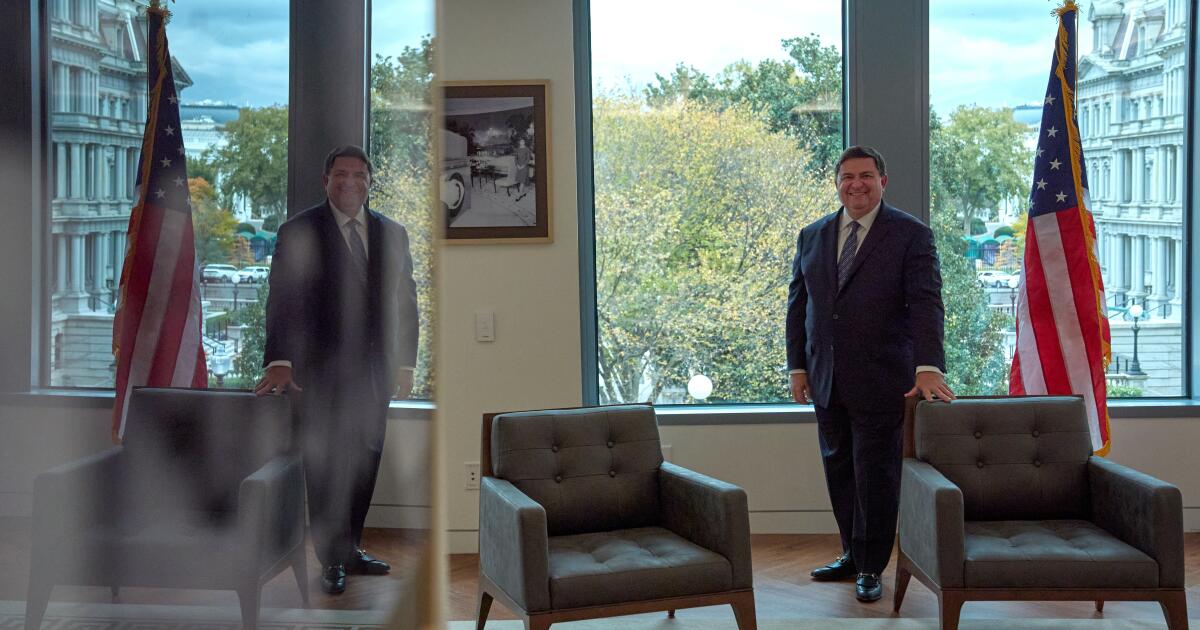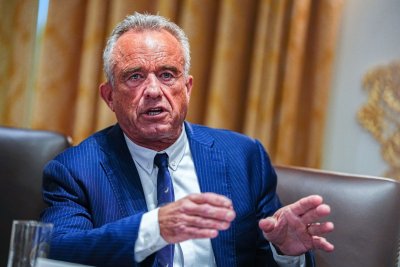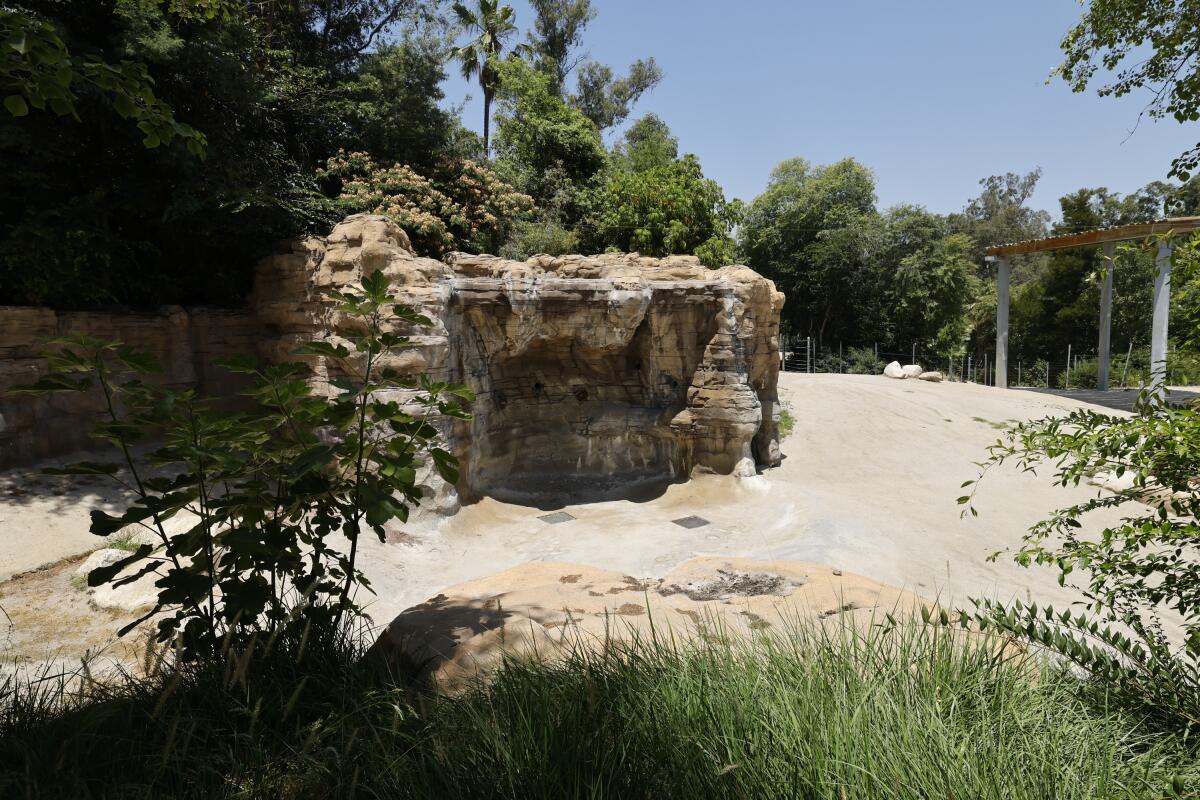The East Wing demolition was ‘jarring.’ But a White House history buff sees a silver lining
WASHINGTON — Stewart McLaurin knew it was coming.
An entire wing of the White House, a building he calls “the most special, important building on the planet,” was going to be replaced to make way for a ballroom that President Trump wants to add to the building.
But when McLaurin, president of the White House Historical Assn., saw the first images of backhoes tearing into the East Wing, it still came as a bit of a shock.
“When the reality of things happen, they strike us a little bit differently than the theory of things happening, so it was a bit of a jarring moment,” McLaurin told the Associated Press in an interview Tuesday.
McLaurin, who has led the nonprofit, nonpartisan organization for more than a decade, did not take a position on the changes. It’s not his job. “Ours is not to make happen, or to keep from happening — but to document what does happen, what happens in this great home that we call the White House,” he said.
But he said he sees a silver lining from the “jarring” images: They have piqued public interest in White House history.
“What has happened since then is so amazing in that in the past two weeks, more people have been talking about White House history, focused on White House history, learning what is an East Wing, what is the West Wing … what are these spaces in this building that we simply call the White House,” McLaurin said.
Trump demolishes the East Wing
The general public became aware of the demolition work on Oct. 20 after photos of construction equipment ripping into the building began to circulate online, prompting an outcry from Democrats, preservationists and others.
In a matter of days, the entire two-story East Wing — the traditional base of operations for first ladies and their staffs — was gone. The demolition included a covered walkway between the White House, the family movie theater and a garden dedicated to First Lady Jacqueline Kennedy.
Trump had talked about building a ballroom for years and pushed ahead with his vision when he returned to office in January. His proposal calls for a 90,000-square-foot structure, almost twice the size of the 55,000-square-foot White House itself and able to accommodate 1,000 people. The plan also includes building a more modern East Wing, officials said.
The president ordered the demolition despite not yet having sign-off for the ballroom construction from the National Capital Planning Commission, one of several entities with a role in approving additions to federal buildings and property. The White House has yet to submit the ballroom plans for the commission’s review because it is closed during the government shutdown.
Trump appointed loyalists to the planning commission in July. On Tuesday he also fired the six members of the Commission of Fine Arts, a group of architectural experts that advises the federal government on historic preservation and public buildings. A new slate of members who are more aligned with Trump’s policies will be named, a White House official said, speaking on condition of anonymity because they were not authorized to comment publicly on personnel decisions. The Washington Post was first to report the firings.
East Wing art and furnishings preserved
It was the job of the White House curator and their staff to carefully remove, catalog and store the art, the official portraits of former first ladies, and furnishings from the East Wing, McLaurin said.
The White House Historical Assn. does not have a decision-making role in the construction. But it has been working with the White House to prepare for the changes.
“We had known since late summer that the staff of the East Wing had moved out. I actually made my last visit on the last day of tours on August the 28th,” McLaurin said.
Working with the curator and chief usher, the association used 3D scanning technology “so that every room, space, nook and cranny of the East Wing, whether it was molding or hinges or door knobs or whatever it was, was captured to the nth degree” to be digitally recreated as an exhibit or to teach the history of that space, McLaurin said.
A photographer also documented the building as it was being taken apart. It will be a while before any images are available, but McLaurin said items were found when flooring was pulled up and when wall coverings were pulled back that “no living person remembered were there. So those will be lessons in history.”
White House has grown over the years
Trump’s aides have responded to criticism of the demolition by arguing that other presidents have made changes to the White House too. Trump said the White House needs a bigger entertaining space.
McLaurin said the building continues to evolve from what it looked like when it was built in 1792.
“There is a need to modernize and to grow,” he said, noting that White House social secretaries for generations chafed at the space limitations for entertaining. “But how it’s done and how it’s accomplished and what results is really the vision of the president who undertakes that project.”
What the White House Historical Assn. does
Jacqueline Kennedy created the historical association in 1961 to help preserve the museum quality of the interior of the White House and educate the public. It receives no government funding and raises money mostly through private donations and sales of retail merchandise.
It is not the mission of the association to take a position on construction, McLaurin said. Its primary mandate is preserving the State Floor and some of the historic bedrooms upstairs in the private living quarters, and teaching the history of the White House, which is an accredited museum. The State Floor is made up of the Green, Blue and Red Rooms, the East Room and State Dining Room, the Cross Hall and Grand Foyer.
“Ours is not to support — or to not support,” McLaurin said. “Ours is to understand, to get the details.”
Since the demolition, McLaurin said he has seen attendance spike at a free educational center the association opened in September 2024 a block from the White House. “The People’s House: A White House Experience” is open seven days a week — including during the shutdown.
The educational center had its busiest days the weekend of Oct. 17-19, with about 1,500 daily visitors, up from a previous average of 900, he said.
Superville writes for the Associated Press.









